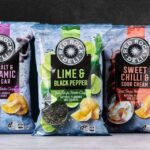The pandemic continues to impact both industries and consumers across the world at an unprecedented scale. Just like other industries, the food & grocery industry has been no exception and has witnessed significant disruption over the past year.
Over the last few months, the behaviour of consumers across the world has changed dramatically and they are still evolving, continually developing newer habits. Experts believe that the impact of the pandemic is bound to alter all aspects of a consumer’s life. But while some areas would witness temporary effects where habits change for short duration and then go back to pre-COVID-19 ways, other areas would face long-term consequences.
These changes do impact characteristics of products consumers buy, dynamics of product categories and operations of product companies. For example, the short term changes in consumer behaviour were apparent in the sudden shift in demand for product categories. After the pandemic hit, healthy food & grocery products that promise vitamins, minerals and other healthy immunity boosting ingredients witnessed a sudden surge in demand. On the other hand, demand for more discretionary categories, such as non-essential products like alcohol and carbonated beverages has been impacted, according to a Ernst & Young report titled ‘COVID-19 and Emergence of a New Consumer Products Landscape in India’.
In the wake of this change in consumer behavior and lifestyle, businesses operating in the Food & Grocery industry are compelled to streamlined their brand portfolio, and continually innovate in all aspects of their operations – right from product development, in-store services to marketing strategies to appeal to consumers who have now become more discerning than ever before.
In its report titled ‘Reimagining Consumer-Goods Innovation for the Next Normal’, McKinsey & Company highlights how the COVID-19 pandemic has compelled Food & Grocery industry to reimagine their innovation portfolios to lead in the next normal. Among other factors the report outlines consumer behaviors are particularly germane to the innovation agenda.
Consumers around the world are trying out new products and the onus lies on brands and retailers to understand the specific requirements of their TG and serve them accordingly. According to the report, Food & Grocery companies and retailers that accommodate changing consumer behaviors as such will probably emerge from the crisis stronger, putting pressure on competitors to keep pace.
At the same time, there has also been a resurgence of larger brands. Globally, consumers are shifting to ‘brands that consumers can absolutely trust’. The report highlights that about 77 percent of consumers in India have switched choices to ‘trustworthy brands’ during the pandemic. This provides businesses to innovate and come up with redesigned branded products could have an opportunity to deliver more value.
One of the more clear outcomes of the pandemic is the abrupt shift to digital retail. Social distancing has accelerated adoption of e-commerce and consumers will continue to embrace digital platforms for a variety of needs in the years to come. This is apparent because even after lock-down restrictions were lifted, digital engagement has continued to remain high, with ~80 percent of consumers reporting safe, easy, and convenient experiences in DTC channels. This stands as a testimony to the utter importance of personalization, the right social-media and mobile presence, and the right marketing message for businesses to ensure growth.
A recent Deloitte Consumer tracker survey sees an increasing trend towards BOPIS (buy online pickup in-store), apart from the increase in pure play online purchase and delivery. The primary reason for this centers around safety, as also ability to browse through the entire assortment more efficiently, at their convenience and in the comfort of their home.
















